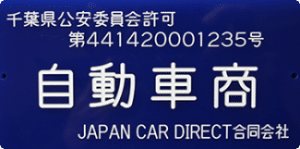Bill of Lading
A document that establishes the terms of a contract between a shipper and a transportation company. It serves as a document of title, a contract of carriage and a receipt for goods.
Container
A truck trailer body that can be detached from the chassis for loading into a vessel, a rail car or stacked in a container depot. Containers may be ventilated, insulated, refrigerated, flat rack, vehicle rack, open top, bulk liquid or equipped with interior devices. A container may be 20 feet, 40 feet, 45 feet, 48 feet or 53 feet in length, 8’0″ or 8’6″ in width, and 8’6″ or 9’6″ in height.
Cost and Freight
A Term of Sale where the seller pays the costs and freight necessary to bring the goods to the named port of destination, but the risk of loss of or damage to the goods, as (continued) well as any additional costs due to events occurring after the time the goods have been delivered on board the vessel, is transferred from the seller to the buyer when the goods pass the ship’s rail in the port of shipment. The CFR term requires the seller to clear the goods for export.
Cost, Insurance and Freight
A Term of Sale where the seller has the same obligations as under the CFR but also has to procure marine insurance against the buyer’s risk of loss or damage to the goods during the carriage. The seller contracts for insurance and pays the insurance premium. The CIF term requires the seller to clear the goods for export.
Free on Board
An International Term of Sale that means the seller fulfills his or her obligation to deliver when the goods have passed over the ship’s rail at the named port of shipment. This means that the buyer has to bear all costs and risks to loss of or damage to the goods from that point. The FOB term requires the seller to clear the goods for export.
Inspection Reports
When vehicles are presented to the auction house for sale, the auctioneers undertakes a rigorous inspection of the vehicle prior to the auction and prepares an Inspection Report for prospective buyers to view. This is effectively a 3rd party inspection, as the inspection is not commissioned by the private inpidual, dealer or corporation submitting the vehicle for auction, and this seller has no control over the contents of the auction house’s report; moreover, the auction houses apply flat fees for the vehicles appearance at auction (i.e. they have no vested interest in the vehicle itself). They tend to be very strict with the recording of any perceived faults (as well as fairly representing the sales features of the vehicle), and for good reason – there is a claim/return procedure to which the auction house can be held accountable should the condition of the vehicle not be represented wholly and accurately on the Inspection Report.
Invoice
An itemized list of goods shipped to a buyer, stating quantities, prices, shipping charges, etc.
Letter of Credit
A document, issued by a bank per instructions by a buyer of goods, authorizing the seller to draw a specified sum of money under specified terms, usually the receipt by the bank of certain documents within a given time.
Marine Insurance
Broadly, insurance covering loss or damage of goods at sea. Marine insurance typically compensates the owner of merchandise for losses sustained from fire, shipwreck, etc., but excludes losses that can be recovered from the carrier.
Original Equipment Manufacturer
Original equipment manufacturer, or OEM, is a term that refers to containment-based re-branding, namely where one company uses a component of another company within its product, or sells the product of another company under its own brand. OEM refers to the company that originally manufactured the product.
Pro Forma Invoice
A quotation in the form of an invoice prepared by the seller that details items which would appear on a commercial invoice if an order results.
Proxy Bidding
Proxy bidding is a system that allows you to bid the maximum amount you are willing to pay for a vehicle with the possibility of winning the vehicle for less. Your bid is kept secret from all other bidders as the auction proceeds. The system will automatically enter your lowest possible winning bid and continue to increase your bid until your maximum bid is reached. If all other bidders stop bidding before your maximum bid is reached, you will win the vehicle for the amount of the final bid plus a standard 3,000 yen increment. You pay the lowest possible winning bid and do not have to pay the full amount of your maximum bid. If there are two or more identical “winning” bids, the bid that was placed first will win the vehicle.
Roll On/Roll Off
A shortening of the term, “Roll On/Roll Off.” A method of ocean cargo service using a vessel with ramps which allows wheeled vehicles to be loaded and discharged without cranes.
Telegraphic Transfer
The most common payment method that requires the use of cable or telegraph to remit funds. Money does not move physically. The order to pay is wired to an institutions casher to make payment to a company or inpidual.
Vehicle Inspection, Shaken
Known as “shaken” in Japanese. This bi-yearly inspection and component replacement regime also includes mandatory liability insurance, weight tax, vehicle tax and can cost upwards of $1,500 US. New vehicles depreciate at a considerably faster rate than in other countries, and beyond a certain mileage (50,000 miles/85,000 km) it becomes economically prohibitive to renew the “shaken,” as the resale values approach residual. This stringent (some say draconian) system, coupled with the Japanese zeal to own the latest models, gives rise to an abundant number of used vehicles in great condition reaching the auctions every day. The bi-yearly “shaken” also makes tampering with the odometer very difficult as a running record of the car’s mileage is kept and vehicles that deviate from this record are marked on the auction house inspection reports.




